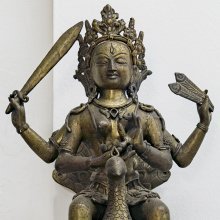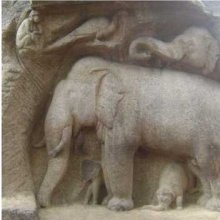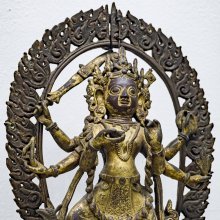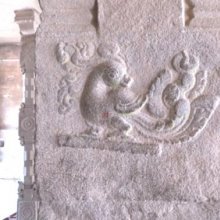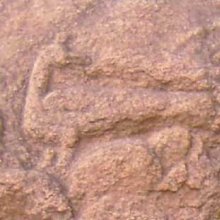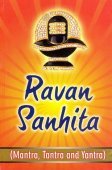Peacock: 4 definitions
Introduction:
Peacock means something in Buddhism, Pali, Hinduism, Sanskrit, the history of ancient India. If you want to know the exact meaning, history, etymology or English translation of this term then check out the descriptions on this page. Add your comment or reference to a book if you want to contribute to this summary article.
Images (photo gallery)
(+22 more images available)
In Hinduism
Natyashastra (theatrics and dramaturgy)
Source: Shodhganga: Elements of Art and Architecture in the Trtiyakhanda of the Visnudharmottarapurana (natya)The Gait of the Peacock is denoted by the Sanskrit term Mayuragati, and represents one of the various Gatis (“way of walking”) (in Indian Dramas), according to the Abhinayadarpaṇa.—Accordingly, gaits (gatis) are explained along with some particular hand gestures. It shows that footsteps are to be followed by some hand postures. The gait of mayura i.e., peacock steps can be made by standing on toes and moving both the knees alternately. In this gait the actor or dancer should hold kapitthahasta with both hands.

Natyashastra (नाट्यशास्त्र, nāṭyaśāstra) refers to both the ancient Indian tradition (shastra) of performing arts, (natya—theatrics, drama, dance, music), as well as the name of a Sanskrit work dealing with these subjects. It also teaches the rules for composing Dramatic plays (nataka), construction and performance of Theater, and Poetic works (kavya).
Ayurveda (science of life)
Toxicology (Study and Treatment of poison)
Source: Shodhganga: Kasyapa Samhita—Text on Visha ChikitsaThe Peacock is denoted by the Sanskrit term Śikhin and is mentioned as one of the sworn enemies of Snakes (Sarpas), as taught in the Kāśyapa Saṃhitā: an ancient Sanskrit text from the Pāñcarātra tradition dealing with both Tantra and Viṣacikitsā (Toxicology).—The Kāśyapasaṃhitā (verse IV.33) talks about the sworn enemies of Sarpas (snakes): Boar, lightning, śikhin (peacock), eagle, cat, mongoose and wolf are its sworn enemies.

Āyurveda (आयुर्वेद, ayurveda) is a branch of Indian science dealing with medicine, herbalism, taxology, anatomy, surgery, alchemy and related topics. Traditional practice of Āyurveda in ancient India dates back to at least the first millenium BC. Literature is commonly written in Sanskrit using various poetic metres.
In Buddhism
Tibetan Buddhism (Vajrayana or tantric Buddhism)
Source: academia.edu: The Structure and Meanings of the Heruka MaṇḍalaThe Peacock is associated with the Yoginī (female deity) named Mayūrī, being situated in the Vāyucakra, according to the 10th century Ḍākārṇava-tantra: one of the last Tibetan Tantric scriptures belonging to the Buddhist Saṃvara tradition consisting of 51 chapters.—Accordingly, the vāyucakra refers to one of the three divisions of the dharma-puṭa (‘dharma layer’), situated in the Herukamaṇḍala. The 36 pairs of Ḍākinīs [viz., Mayūrī—“Peacock”] and Vīras are dark blue in color; they each have one face and four arms; they hold a skull bowl, a skull staff, a small drum, and a knife.

Tibetan Buddhism includes schools such as Nyingma, Kadampa, Kagyu and Gelug. Their primary canon of literature is divided in two broad categories: The Kangyur, which consists of Buddha’s words, and the Tengyur, which includes commentaries from various sources. Esotericism and tantra techniques (vajrayāna) are collected indepently.
India history and geography
Source: Singhi Jain Series: Ratnaprabha-suri’s Kuvalayamala-katha (history)Peacocks were commonly depicted on the Saṃsāracakra paintings (representing scenes of animal life), in ancient India, as mentioned in the Kathās (narrative poems) such as Uddyotanasūri in his 8th-century Kuvalayamālā (a Prakrit Campū, similar to Kāvya poetry).—Page 185.21 f.: Here follows a description of a printed scroll illustrating the Jaina conception of saṃsāracakra. [...] The saṃsāra-cakra illustrated the three worlds of hell, human world and the world of gods. [For example:] Wounded beasts attacking the other wounded ones; peacock swallowing a serpent.

The history of India traces the identification of countries, villages, towns and other regions of India, as well as mythology, zoology, royal dynasties, rulers, tribes, local festivities and traditions and regional languages. Ancient India enjoyed religious freedom and encourages the path of Dharma, a concept common to Buddhism, Hinduism, and Jainism.
See also (Relevant definitions)
Starts with: Peacock feather, Peacock fern, Peacock flower, Peacock flower-fence, Peacock tree, Peacock-plume grass.
Full-text (+895): Mayura, Keka, Shikhavala, Shikhanda, Mora, Kalapin, Sikhin, Shikhi, Barhiṇa, Mayurika, Menada, Shikhandi, Sitapanga, Kumaravahin, Piccha, Nilakantha, Kekin, Pracalakin, Krikavaku, Candrakin.
Relevant text
Search found 197 books and stories containing Peacock; (plurals include: Peacocks). You can also click to the full overview containing English textual excerpts. Below are direct links for the most relevant articles:
Our National Bird: The Peacock its Myths and Legends < [October 1966]
Our National Bird: The Peacock its Myths and Legends < [October 1966]
Peacock's Feather-eye < [June 1943]
Animal Kingdom (Tiryak) in Epics (by Saranya P.S)
Chapter 4.31 - The Mayura (Peacock) in the Epics
Chapter 2.7 - Animals as vehicles of Gods
Chapter 4.20 - Animals and birds in the epic Ramayana (Introduction)
Sahitya-kaumudi by Baladeva Vidyabhushana (by Gaurapada Dāsa)
Text 9.36 < [Chapter 9 - Ornaments of Sound]
Text 6.2 < [Chapter 6 - Third-rate Poetry and Super-excellent Poetry]
Text 10.35 < [Chapter 10 - Ornaments of Meaning]
The Jataka tales [English], Volume 1-6 (by Robert Chalmers)
Jataka 491: Mahā-Mora-jātaka < [Volume 4]
Jataka 32: Nacca-jātaka < [Book I - Ekanipāta]
Jataka 159: Mora-jātaka < [Book II - Dukanipāta]
Yoga Vasistha [English], Volume 1-4 (by Vihari-Lala Mitra)
Chapter CXVIII - Description of deer, peacocks, cranes &c < [Book VII - Nirvana prakarana part 2 (nirvana prakarana)]
Chapter XXXI - Queries of rama < [Book I - Vairagya khanda (vairagya khanda)]
Chapter XV - Vasishtha’s visit to bhusunda < [Book VI - Nirvana prakarana part 1 (nirvana prakarana)]
Gati in Theory and Practice (by Dr. Sujatha Mohan)
Gati in folk dances of Andhra < [Chapter 4 - Practice of Gati]
Description of Gati in Abhinayadarpaṇa < [Chapter 2 - Concept and technique of Gati]
Gait identified in the martial arts of India < [Chapter 4 - Practice of Gati]
Related products
